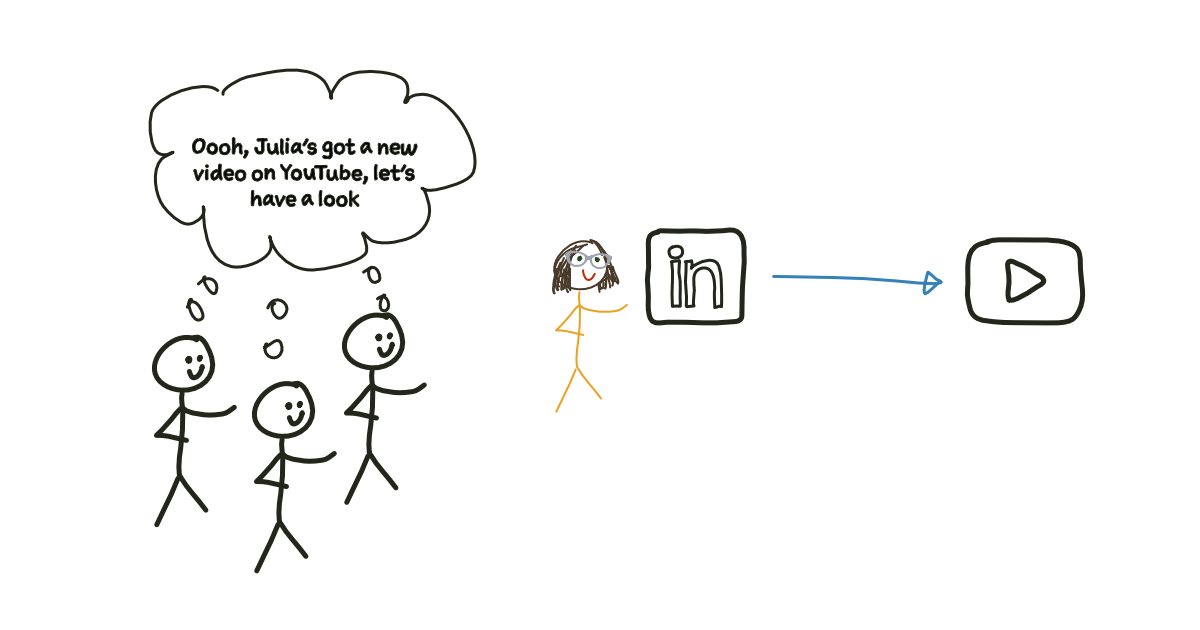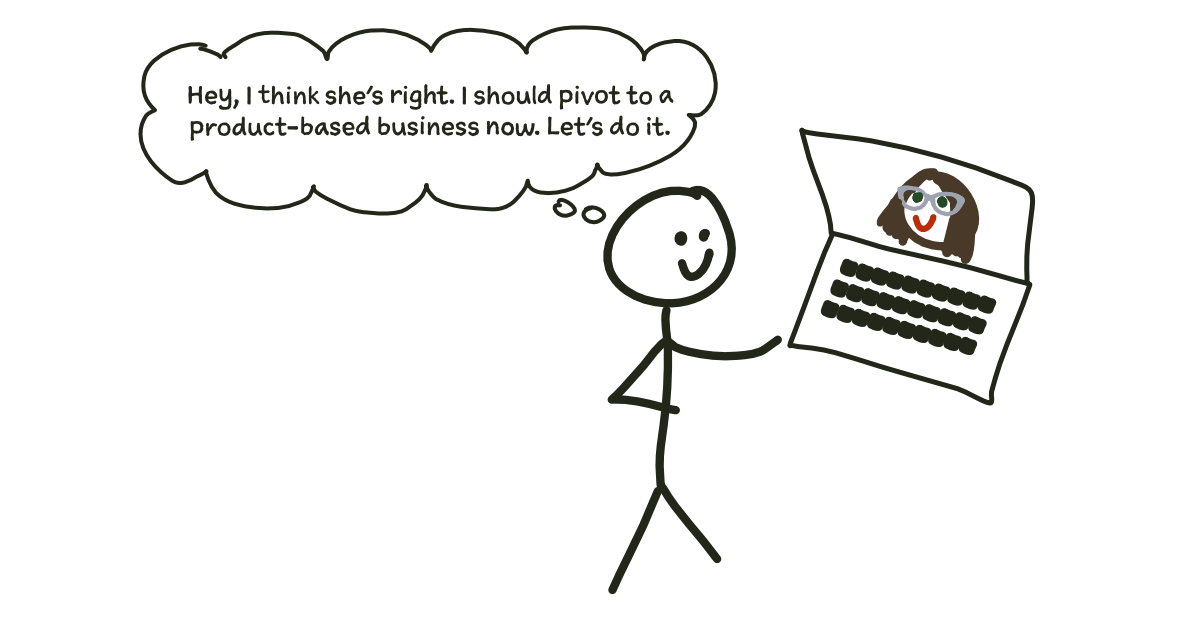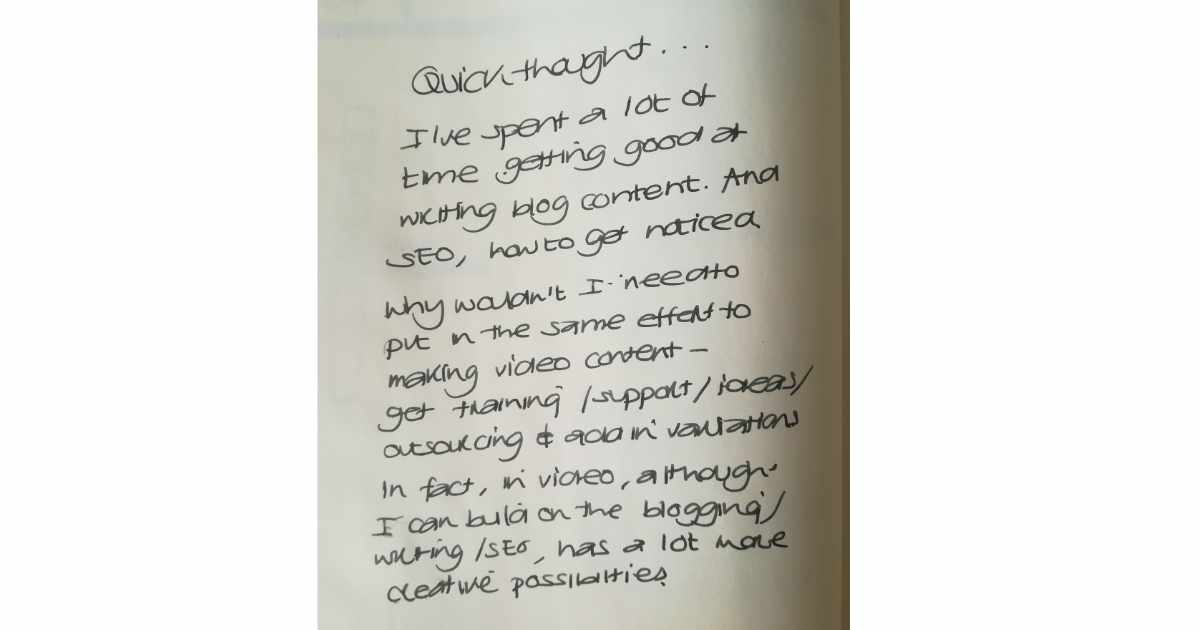Adventures in YouTube land: my key takeaways

I never thought I’d be a YouTuber. I thought I’d be a writer.
But, someone suggested that it would be a good idea to set up a YouTube channel for Adventures in Products and explained why it would be a good idea. I’d finally gotten over my block about making videos by diving into making a whole load of videos for the courses and programmes, so I went for it.
Adventures in Products Youtube channel
The Adventures in Products YouTube channel is starting to get some traction after six months of plugging away. Thirty video uploads later, I’m now starting to see people finding my content through YouTube searches and YouTube suggesting my videos to people. Whoop.
Enough toe-dipping, time to commit
It’s been a challenge along the way. I’d set up a channel in the first days of YouTube shorts, but I hadn’t really done anything since. Back in July 2022, I was just reposting Instagram reels onto YouTube. Turns out this was 100% the wrong way around.
In December 2022, I did a course on YouTube SEO. Coincidentally, I met someone with a very niche product who had built up a following on YouTube over a couple of years. He’d sold a lot of products to his followers. If you’re reading this, Sam, my chat with you made me decide to go for it.
I researched how to make good thumbnails and sort of copied how Google do their thumbnails for their Google talks. For the videos where I’m interviewing or featuring someone else, I copied the ZOE Health layout. I figured both of these companies knew what they were doing.
And then I wrote a ton of descriptions and Amanda, my valiant virtual assistant, scheduled one video per week.

Tick, tock… YouTube’s crucial viewing timeframe
One thing I didn’t know about YouTube is that, unlike regular SEO, it’s vital to get views in the first 24 hours. If you launch to tumbleweed, your video will languish in the long grass forever.
That’s so different to blogging SEO. I can upload a blog whenever I want, and it will gradually get noticed by Google and gain traction over time. As long as the blog is good, useful for my audience and has the right keywords in the right place, it will slowly rank on Google. And then I can link to it, other people will link to it, and it will live forever.
Not so much on YouTube.
The title, keywords in the title and the description are just as important on YouTube as when you’re putting out written content. But those first 24 hours are vital.
My valiant virtual assistant Amanda has the job of manually posting on LinkedIn and Instagram that we have a new YouTube video to try to get people watching in the first few hours. Thanks, Amanda. And if you’re one of the people who has clicked through from LinkedIn and watched one of the Adventures in Products videos, thank you too.

Consistency and creativity are key
The other factor that is the same as regular blogging is consistent posting. I was lucky with YouTube that I already had a bank of great video content. I had a great video editor (thanks, Lew) who could take my course videos, cut them down, mix them up, add the bit at the end where I suggest another YouTube video to watch and make new content. Lew even came around to my office and made suggestions for new video formats, which I’m just starting to adopt for the next batch of videos.
The fabulous Miranda Birch also made about a million suggestions for new formats, how to remix old videos to make them work on YouTube and new subject ideas. She also taught me her “Richest Conversations” methodology for interviewing people. I’m just about to set up some new interviews for my product success stories. I’m not turning the channel into a podcast, though, just filming some people who have made successful products and talking to them about the strategies and tactics they’ve used.
What results have I got from YouTube so far?
I don’t think I’ve sold a single product from YouTube so far. The whole project is a long-term leap of faith.
I see it like this.
When you’re building a product-based business, you’re putting in a helluva lot of time, resources and energy to build products that will be long-term assets. That’s important to understand. Especially when you remember that long-term success with a products business only comes when you have an ecosystem of products all working together.
And at the same time as putting all that loving care and energy into your products, you have to build your tribe. Your tribe is your number one asset. Someone on the Productise Your Expertise programme said that you need two ecosystems, one for products and one for marketing. That seems a good way to put it.
In fact, if I was in some hellish situation where I had to choose between the “asset classes” of my tribe-building assets or my products, I’d grab all my blogs, lead magnets and YouTube channel, clutch them to me and run from the burning building. I can make new products. I can’t make new connections with people nearly as easily.
Don’t worry; everything is backed up.
A powerful tool for tribe building
The Adventures in Products YouTube channel is a place to build a new tribe of people. Folk who regularly watch my videos. People who go, “Oh, Julia Chanteray has put out a new video, I’ll have a little look.” Ideally, thinking that I’m funny, helpful and explain how to build a successful product business in a clear and honest way.
And some of those people will use the videos to get an idea if I’m the right person to help them and to decide if they want to commit to pivoting to a product-based business. At that point, they will follow some of the links I put in the YouTube description (I also learnt how important these are) and come here to the Adventures in Products website.
I’m cool with that process taking a long time. I don’t need to sell anything tomorrow. And because I respect the people I work with and understand that deciding to make products and maybe switch the focus of your whole business is a big deal, I’m happy to wait for them. And help them make that decision with my realistic optimism and enthusiasm for this path.
The great attention competition
We all know that we’re competing more for people’s attention than for their money. And on YouTube, you’re definitely competing for someone’s attention. There are billions of videos on there, and quite a lot of them have kittens, fantastic feats or people who are way funnier than me.
What I hope for with the Adventures in Products YouTube channel is that I have the opportunity to spend time with business owners who are starting to think about the whole product pivot concept, hang out with them and pass on some tips. I can’t do that with each individual. Making videos about all of this is the best way to hang out with lots of people and to have those conversations, to be in the room with them at scale.
And then some of those people will click through and buy.

Why building trust equals building your tribe
I would argue that this is the same process, no matter where you build your tribe. Certainly, if you want to charge decent money, sell something of quality, something that makes an impact on the world, you have to take people on a little bit of a journey. And they will only buy from you if they trust you to be their guide on that journey.
From my research (which has been mostly watching YouTube videos from other YouTubers), it takes between 12 and 24 months of putting out consistent content to build a reasonable audience on YouTube. There seem to be two reasons for this. Firstly, putting out enough videos over time so that YouTube notices you and people start to watch and subscribe. I would draw your attention to the tactical lessons on building a YouTube channel on this one, which I’ve put in a handy downloadable list here for you.
And secondly, it gives people enough time to watch some of those videos and grow to like what you say enough to trust you with their hard-earned cash. In my case, it also involves people deciding to do something differently, i.e., start making and selling products instead of trading time for money.

Gathering pace by maximising reach
I’m hoping that this will be more like 12 months than 24 in my case (I’m not that patient). I think I can accelerate a little because I’m also building my tribe in other places, so I can get people in my LinkedIn tribe to become part of my YouTube tribe. In fact, I’m working on tribe building on Medium, LinkedIn and here on the Adventures in Products website. With all of these places, I’m gently encouraging people to get my weekly emails about productising, because they are the best bits.
What next?
I now think it’s pretty apparent that I’m not a YouTuber after all. If I was a natural YouTuber, I would have made a video to tell you all this, probably while filming myself using a selfie stick while walking somewhere interesting. Instead, I automatically put these thoughts together as a blog. It would seem that I’m a writer after all.
But

Here’s what I found myself noting down in my journal this afternoon. So I made a big commitment to getting better at video. And a small commitment to making a video this afternoon as a start on that.
Maybe I am a YouTuber as well.
Top tips for building your YouTube channel from the start
Pivot to Products
The Pivot to Products course gets you started on your adventures in products. Specifically designed for people with a services business who want the fast route to developing and selling products.
Pivot to Products gives you a plain sailing roadmap for developing recurring revenue products based on the knowledge you already use with clients every day.
It’s what I wish I’d had in 2014 when I started making products and the distillation of everything I’ve learned since.
Pivot to Products course
Self paced course covering everything you need to get started making and selling products.
Pivot to Products Plus
The full Pivot to Products course, plus two hours one-to-one with Julia Chanteray.
